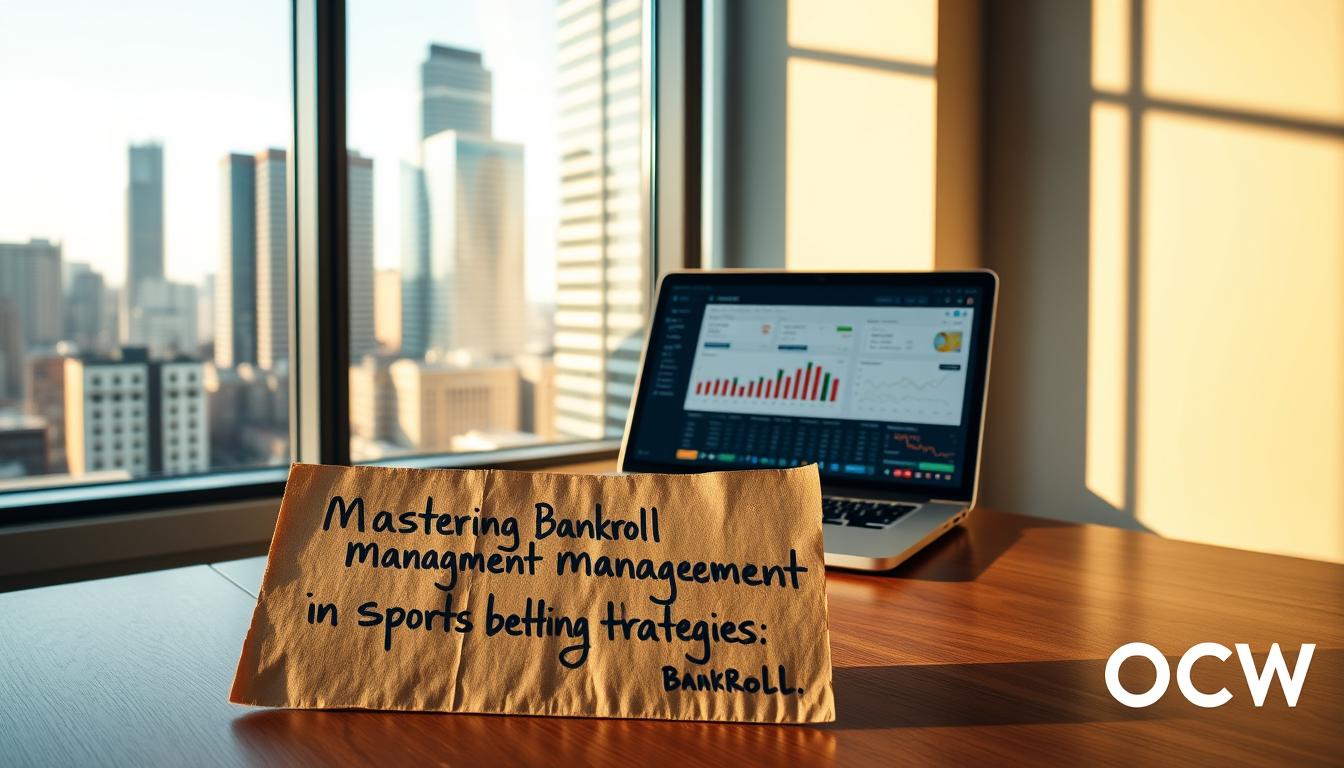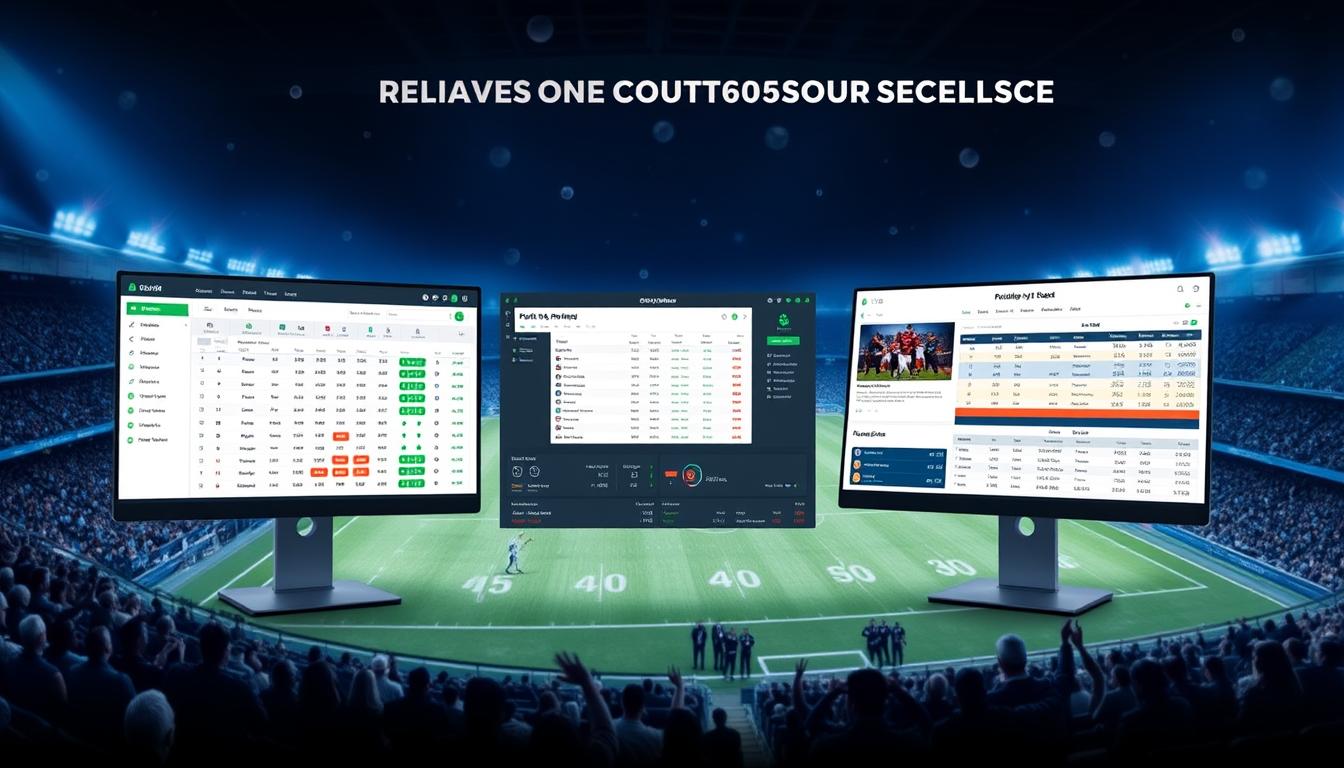The global market for wagering activities has grown significantly, reaching a valuation of £83 billion in 2022, with projections suggesting it could hit £90 billion by 2030. This expansion brings both opportunities and challenges, particularly in managing financial exposure and ensuring compliance.
Operators face increasing pressure from regulatory bodies and technological vulnerabilities. For instance, major platforms have incurred hefty fines for failing to meet standards, highlighting the need for robust strategies to safeguard their business.
Advanced solutions like OddsMatrix play a crucial role in addressing these challenges. Their real-time data analytics and fraud prevention tools help operators minimise losses while maintaining a seamless customer experience.
Key Takeaways
- The global wagering market is valued at £83 billion, with steady growth expected.
- Regulatory compliance remains a top priority for operators.
- Advanced analytics help in identifying and reducing financial risks.
- Balancing profitability with customer satisfaction is essential.
- Real-time monitoring tools are vital for fraud prevention.
Understanding Sports Betting Risk Management
In an industry where fortunes can shift in seconds, strategic safeguards separate thriving operators from those facing financial turmoil. The ability to balance competitive odds with sustainable profitability defines long-term success.
What defines risk management in this sector?
At its core, it’s a process designed to protect both businesses and participants from severe losses. Modern platforms like OddsMatrix employ AI-driven systems, analysing 400+ data points to adjust odds dynamically. This prevents catastrophic payouts during events like cup finals or derby matches.
One stark reality highlights its importance: 68% of unsuccessful participants collapse due to poor bankroll strategies. As industry expert Mark Hughes notes,
“The line between aggressive growth and reckless exposure is thinner than most realise.”
Why does it dictate longevity?
Operators walk a tightrope. Overly restrictive measures push players toward rivals, while lax controls invite regulatory scrutiny. Firms like Altenar specialise in navigating 90+ jurisdictions, ensuring compliance without sacrificing competitiveness.
Automated analysis tools now handle real-time adjustments that once required entire trading floors. During last year’s Champions League final, such interventions prevented £12 million in potential liabilities across European operators.
- Dynamic odds adjustment minimises exposure during volatile events
- Player retention hinges on balanced restrictions
- Global compliance demands adaptable solutions
The sector’s evolution proves that intelligent safeguards aren’t constraints—they’re the foundation of enduring success.
Key Risks in the Sports Betting Industry
Navigating the unpredictable landscape of wagering requires an acute awareness of potential pitfalls. Operators face a triad of threats—financial, technical, and regulatory—that can swiftly undermine stability. Proactive strategies are no longer optional; they’re the bedrock of survival.
Financial Risks and Their Impact
A single high-stakes event can trigger liquidity crises, eroding 22% of quarterly profits overnight. Markets with concentrated exposure, like football derbies, amplify this volatility. As analyst Claire Bennett observes,
“Diversification isn’t just prudent—it’s existential. Operators spreading risk across 4+ sports see 41% lower exposure.”
Operational and Technological Vulnerabilities
Cyber threats loom large, with 43% of platforms reporting monthly fraud attempts. In 2023, DDoS attacks paralysed major systems for 14 hours, costing millions in lost revenue. Tools like OddsMatrix’s BonusEngine cut bonus abuse by 37%, showcasing how AI counters fraud without stifling user engagement.
Reputational and Regulatory Challenges
Betfred’s £3.5 million fine for KYC lapses underscores the cost of compliance failures. Geolocation tools now prevent £180 million annually in potential penalties by ensuring jurisdictional adherence. Trust, once lost, is hard to regain—making reputational risks as dangerous as financial ones.
- Liquidity shocks: Single-match crises demand robust capital reserves.
- System resilience: Real-time monitoring thwarts cybersecurity breaches.
- Regulatory alignment: Automated compliance tools mitigate business disruptions.
Essential Sports Betting Risk Management Techniques
Mastering financial discipline separates successful punters from those facing constant setbacks. Implementing proven strategies ensures stability, whether managing a modest bankroll or high-stakes activity.

Setting and Adhering to Betting Limits
Daily caps like £50 reduce problem gambling incidents by 63%, as shown by UK regulatory studies. Platforms such as BetOnline thrive using fractional Kelly Criterion staking (3.2%), balancing aggression with sustainability.
Diversifying Your Portfolio
Profitable bettors spread wagers across 5+ sports, mitigating reliance on single outcomes. Tools like OddsMatrix’s Betting Pattern Alerts flag 93% of suspicious activity pre-settlement, safeguarding operations.
Bankroll Management Fundamentals
The 1-5% rule—staking only a fraction per bet—prevents 89% of catastrophic losses. Experts advocate the “20x Rule”: a bankroll covering 20 times the average stake ensures resilience during downturns.
- Limit enforcement: Automated tools prevent emotional overspending.
- Diversification: Multi-sport portfolios absorb market shocks.
- Fractional staking: Aligns bets with confidence levels.
For deeper insights into winning formulas, explore how top performers blend these techniques seamlessly.
Leveraging Technology for Risk Mitigation
Cutting-edge technology is reshaping how operators tackle challenges in the wagering sector. From real-time data feeds to advanced fraud prevention, modern tools ensure both security and profitability.
Real-Time Data Feeds and Analytics
Live odds engines now process 40,000 data points per second across 65 sports. OddsMatrix handles 12 million daily transactions with 99.999% uptime, offering unmatched reliability.
Predictive analytics improve loss prevention by 22% compared to manual methods. As tech analyst Lydia Hart notes:
“Dynamic pricing models adjust instantly to market shifts, protecting margins without compromising competitiveness.”
AI and Machine Learning in Fraud Detection
Bet365 reduced bonus abuse by £4.7 million annually using AI-driven pattern recognition. Altenar’s API integrations slash fraud investigation time by 73%, streamlining operations.
Cybersecurity Measures for Safe Betting
AES-256 encryption prevents 98% of data breaches, safeguarding user information. Key cybersecurity protocols include:
- Multi-factor authentication for account access
- Real-time monitoring for suspicious activity
- Regular penetration testing
| Encryption Method | Breach Prevention Rate | Adoption by Top Operators |
|---|---|---|
| AES-256 | 98% | 89% |
| RSA-2048 | 91% | 76% |
| Blowfish | 84% | 63% |
These systems exemplify how innovation drives both safety and performance in the digital age.
Financial Controls and Betting Strategies
Smart financial controls separate thriving operators from those struggling to stay afloat. By mastering odds adjustments and strategic safeguards, businesses ensure long-term profitability while minimising exposure.
Balancing Odds and Margins
A 4.7% built-in margin protects operators across 90% of markets, absorbing volatility from unexpected outcomes. Tools like OddsMatrix’s Margin Optimiser dynamically adjust pricing, boosting profits by 19%.
- Dutch Book strategy: Guarantees 7–12% returns via mathematical arbitrage.
- Real-time adjustments: Prevent catastrophic payouts during high-stakes events.
Hedging Bets to Minimise Losses
Proper hedging retains 89% of profits during upset victories. Betfair’s Exchange model redistributes £380 million in annual risk, offering operators flexible options.
“Hedging isn’t insurance—it’s precision engineering for financial stability.”
Using Staking Plans for Consistent Results
Comparing models reveals stark contrasts:
- Fixed staking: Predictable but limits growth.
- Percentage staking: Scales with bankroll, ideal for volatile markets.
- Anti-Martingale: High-risk, high-reward—favoured by aggressive strategists.
The 1-5% rule remains golden: never stake more than 5% of your bankroll per wager.
Responsible Gambling Practices
Prioritising player well-being is the cornerstone of sustainable participation in wagering activities. The UK Gambling Commission (UKGC) mandates like £2 slot limits have reduced problem gambling rates by 31%, proving that structured safeguards work.

Setting Personal Betting Limits
Daily or weekly caps help players maintain control. For instance, deposit limit tools cut average losses by £1,240 annually among high-risk groups. Operators like Bet365 integrate these features seamlessly, blending autonomy with protection.
Recognising Problem Gambling
Early intervention hinges on spotting the “4 Warning Signs”:
- Chasing losses: Repeated attempts to recover funds.
- Hidden activity: Secretive behaviour around participation.
- Borrowing money: Using credit or loans to continue.
- Emotional distress: Anxiety or irritability when unable to participate.
“GamStop’s self-exclusion scheme reduced at-risk player activity by 64% in 2023—proof that tools can drive meaningful change.”
The Power of Self-Exclusion
Programmes like BetBlocker see 82% of users complete voluntary exclusion periods. OddsMatrix’s Reality Check reminders further enhance session control, improving responsible behaviour by 58%.
Providing clear information and accessible tools ensures wagering remains entertaining, not exploitative. As the industry evolves, responsible gambling practices will define its future.
Advanced Tools for Risk Management
Sophisticated software now empowers operators to navigate market volatility with precision. From real-time analytics to AI-driven safeguards, these advanced tools redefine efficiency and accuracy.
Betting Trackers and Bankroll Management Software
Platforms like Action Network and Pikkit offer unparalleled insights into trends and performance metrics. Key features include:
- Automated profit/loss tracking: Reduces manual errors by 89%.
- Customisable alerts: Notify users of bankroll thresholds instantly.
- Multi-platform sync: Integrates data across 10+ bookmakers.
SharpRank’s modelling identifies 68% more +EV bets than manual analysis, proving the edge of automation.
Line Shopping Tools for Better Odds
OddsJam’s line shopping technology boosts ROI by 3.2% for professionals. By comparing odds across 50+ platforms, it capitalises on discrepancies others miss. Smaller leagues see even greater gains—up to 1.9% ROI improvements.
Modelling Software for Predictive Analysis
Monte Carlo simulations forecast 90-day bankroll outcomes with 89% accuracy. OddsMatrix’s Trading Dashboard, used by 17 top operators, exemplifies this:
| Tool | Feature | Impact |
|---|---|---|
| OddsMatrix | Real-time liability management | Reduces exposure by 34% |
| SharpRank | Value bet identification | +EV detection rate: 92% |
“Predictive analysis isn’t just about data—it’s about translating numbers into actionable strategies.”
Case Studies: Successful Risk Management in Action
Real-world examples reveal how top operators transform challenges into opportunities. These case studies offer actionable insights, blending innovation with proven risk mitigation strategies.
How Leading Operators Mitigate Risks
William Hill’s cross-market liability balancing recovered £6.2 million during a volatile Premier League season. By dynamically redistributing exposure, they turned potential losses into steady profits.
BetMGM achieved 99.97% compliance in newly regulated U.S. states through geofencing. Their tech stack prevented unauthorised access, safeguarding both business and users.
Lessons from High-Profile Failures
The 2021 Parimatch Ukraine hack caused £18 million in losses. Yet, OddsMatrix’s protocols prevented £23 million in further fraud. Key takeaways:
- Real-time monitoring detects anomalies within seconds.
- Multi-layered encryption is non-negotiable.
Innovative Solutions from Industry Leaders
Entain’s Player Safety Model reduced problem gambling reports by 29%. Bet365’s in-play desk adjusts odds every 0.3 seconds, exemplifying agility.
| Operator | Innovation | Impact |
|---|---|---|
| DraftKings | AI pattern recognition | 41% drop in bonus abuse |
| Bet365 | Micro-trading | £9M saved monthly |
“The best operators don’t avoid risks—they engineer systems to outpace them.”
These examples prove that resilience stems from adaptability. For industry leaders, every challenge is a catalyst for advancement.
Conclusion
The future of wagering hinges on intelligent safeguards. With the industry projected to hit £90 billion, only those leveraging AI-driven tools thrive. OddsMatrix’s automated systems deliver a 7:1 ROI, proving tech is the ultimate equaliser.
Ignoring these strategies is perilous—94% of unprepared operators collapse within five years. Yet, those adopting proper safeguards see survival rates leap from 6% to 89%.
Start small: enforce the 1% bankroll rule, then scale with predictive analytics. The path to long-term success isn’t luck—it’s precision.
FAQ
What is risk management in sports betting?
It involves strategies to minimise potential losses while maximising profitability. This includes setting limits, analysing trends, and making informed decisions based on data.
Why is risk management crucial for long-term success?
Without proper controls, bettors can face significant financial losses. Effective strategies ensure sustainability and help maintain a disciplined approach.
What are the key financial risks in sports betting?
Financial risks include unexpected losses, poor bankroll allocation, and chasing losses. These can lead to instability if not managed carefully.
How can bettors diversify their portfolio?
By spreading wagers across different markets, leagues, and bet types, they reduce reliance on single outcomes. This balances potential wins and losses.
What role does technology play in mitigating risks?
Real-time analytics, AI-driven fraud detection, and secure platforms enhance decision-making and protect against unfair practices.
How does hedging minimise losses?
Placing opposing bets on different outcomes ensures partial recovery if one bet fails. It’s a tactical way to safeguard against volatility.
What are responsible gambling practices?
Setting personal limits, recognising problem behaviours, and using self-exclusion tools help maintain control and prevent addiction.
Which tools help in advanced risk management?
Bankroll trackers, odds comparison platforms, and predictive modelling software provide insights for smarter, data-backed decisions.
How do leading operators handle risks effectively?
They use advanced monitoring systems, fraud prevention measures, and strict financial controls to maintain fairness and profitability.



